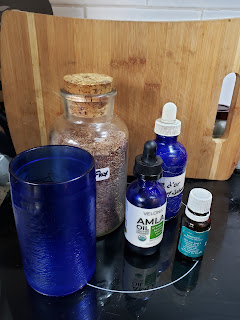Processing Tea
Several years ago, my friend Nikki invited me over for a tea party, both teaching me how to process the leaves, and sharing cups of her beautiful tea and simple snacks.
After tea, went out to pick another flush from her 9 shrubs, and she sent me home with a basket of fresh leaves, which I augmented with leaves from my own tea camellia, making a batch at home the following day.
 |
| Camellia sinensis Sochi |
While the flowers are small (about the size of a strawberry flower!) Sochi's leaves are about the size of those on our common ornamental Camellias.
The flowers can also be used for a light and fragrant tea, which i first tasted at the Dao of Tea in Portland.
Tea camellia in center of the Tea Garden
High in antioxidants, especially catechins, studies show drinking green tea daily can be preventative for cancers, lowers the risk of stroke, and helps control blood sugar.
In Okinawa Japan, one of the "Blue Zones" noted for healthy longevity, enjoying several cups of green tea daily is common. They may add jasmine or tea Chrysanthemum flowers, or a bit of turmeric for shan-pien, "tea with a bit of scent."
Since that first tea party with Nikki, I went on to process many batches of Galloway Green tea from my own large shrub (5 x 5' by the time I moved last fall) I was sad to leave it behind, but have several seedlings from Nikki to start my new tea garden.
 |
| Tea Harvest - 24 hour rest |
After plucking the top 3-4 soft leaves from each stem, they rest for 24 hours, with an occasional toss.
The next step is to heat them in a hot wok. I use a wooden salad fork and spoon to gently stir and keep the leaves from browning in a "stir-fry green" process.
The tea leaves are turned out onto a well washed cotton kitchen cloth while still green, tossed as they cool, then bundled into a ball and kneaded to lightly crush and oxygenate.
 |
| In the wok |
 |
| Cooling after time in the wok |
Meantime, the oven is heating to 400°
My Air fryer only goes to 360° - which is just right, as to convert a recipe, we lower the heat by 25° and cooking time by ~ 20%.
When the oven reaches temperature, the leaves are spread on a baking sheet or pan, and baked for 3 minutes, removed from the oven and spread on the cloth to cool for a few minutes. This is repeated for 2 minutes, then 1 minute, and the leaves gently tossed between each round in the oven.
With each round of the process, the leaves get drier and darker, retaining a green tint. The fragrance is a lovely light floral, rather like Jasmine.
After the third round of baking, the leaves are left to dry on a rack, and tossed occasionally as before. When they reach the crispy dry state, they can be stored in a clean dry container in a dark cupboard. I sometimes separate stem pieces, and after a round in the wok, bake a bit longer to dry them for kukicha or twig tea.
 |
| Ready to knead |
 |
| After kneading |
 |
| After first round in the oven |
 |
| After the Third round |
 |
| Drying on the rack |
Tea cups and bowls
I have many lovely cups to choose from, when I'm ready to brew a pot of tea. Nikki commented that after she began processing her own, even the best teas no longer taste as flavorful to her! In the airfryer
Today I had just a handful of young Tea leaves picked yesterday at the tea garden, and I used a piece of parchment paper on the airfryer rack to, keep them off the bottom of the glass drawer. They 'floated' up on the parchment paper! This little batch made just enough tea for one cup.
I set the time for 6 minutes, to let it preheat for 3, while the tea leaves were in the wok. After kneading, each round was about a minute. For a larger batch, I'll likely put them at 4 minutes, and let rest at 2, 1 and 1 minute intervals.
Tomorrow I want to harvest some of my wood betony leaves, and see how they do with this process method!
Wood betony "was once the Sovereign remedy for headaches, nerves and 'all maladies of the head. It was often used as a substitute for tea" (and is caffeine free) Gerard wrote, "it preserves the lives and bodies from the dangers of epidemical diseases (!)
- Grieve, A Modern Herbal (1931)
Wood betony - Betonica officinalis
(With a rogue red veined sorrel)
I've picked a few leaves and used fresh or dried for herbal Tisanes, it will be a fun experiment!
Here's a video 'Master Class' on processing tea types!







Comments
Post a Comment